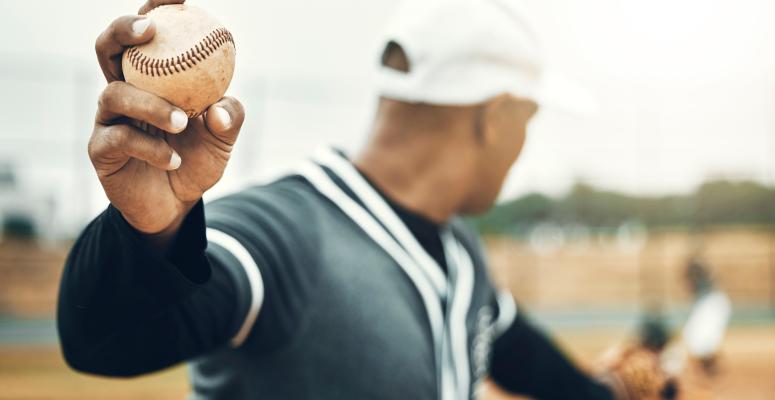
Every athlete puts their body through a lot of stress. But with sports that revolve around a ball, like baseball, hand pain and injuries are incredibly common.
Baseball players have to throw and catch a ball with force and speed that can damage their hands in a variety of ways. A study found that between the Major League Baseball seasons held from 2011 to 2016, there were 4,478 reported hand injuries.
Read on to learn about the most common baseball hand injuries as well as physical therapy methods that can help their road to recovery.
Top 5 hand injuries that are common in baseball players
There are quite a few hand injuries that a baseball player can sustain due to throwing and catching a ball going over an average of 60 mph. Hand injuries can also develop due to batting when a player tries to hit a ball that’s often pitched at more than 90 mph.
Five common hand injuries from playing baseball:
- Hamate hook fractures — Batters can often sustain a hamate hook fracture, which refers to a fracture after the bat is swung and the end of the bat hits the hamate bone. This bone is one of the carpal bones that make up part of the wrist joint. This fracture can cause pain, swelling and weakness.
- Metacarpal fractures — If a baseball hits a player’s hand, they may fracture the bones that connect their finger and thumb bones to their wrist, called the metacarpals. It’s most common in their nondominant hand. Metacarpal injuries make up to 44% of all hand fractures.
- Finger proximal interphalangeal (PIP) joint sprains — Also called a finger jam injury, this sprain affects the finger joint when it’s hit by a high-velocity object, such as a baseball. It can cause pain around the joint, as well as swelling and bruising. It’s possible for the PIP joint to become dislocated, which can cause it to look deformed.
- Mallet finger — A mallet finger, sometimes called a baseball finger or drop finger, refers to an injury that occurs when the tendon at the end of your finger is bent inward toward your palm. It can occur when the baseball hits the tip of the finger or thumb, forcing it to bend further than intended. Unlike a PIP sprain, a mallet finger can’t be straightened without assistance.
- Tendon overuse — There are six tendons that allow your wrist to move, and it’s very common for baseball players to overuse them. The wrist can develop tendinitis, which refers to inflammation of the tendons. It can cause pain, stiffness, swelling and popping sensations during movements.
3 PT methods that can help baseball players who are recovering from hand injuries
Since many of the most common baseball injuries stem from sprains and fractures, it’s important to let them properly heal according to your doctor’s orders. While some injuries may benefit from immediate physical therapy, others may require rest or other treatment options before trying to restore the hand and wrist’s full mobility.
Physical therapy can help reduce the pain from injuring your hand from baseball as well as increase its strength and flexibility. The goal is to increase its range of motion as much as possible.
Here are three physical therapy methods that can help baseball players recover from hand injuries:
- Condition-specific strengthening — A physical therapist can determine the best ways to strengthen your hand based on the injury and ensure that you’re doing safe and effective strengthening exercises. It’s important not to exacerbate the injured parts of the hand while you restore your grip strength.
- Targeted stretching exercises — Similar to the strengthening exercises, a physical therapist will figure out the best ways to increase your hand and wrist flexibility without making the injury worse. By stretching your hand muscles, you can increase your range of motion.
- Manual therapy — When it comes to pain management while recovering from a baseball hand injury, manual therapy is one of the best treatment options. By using their hands, a physical therapist can help alleviate your pain with massage-like motions and increase your range of motion by manipulating the joints.
Alliance PTP can connect you with a great physical therapy practice for baseball hand injuries
At Alliance Physical Therapy Partners, we’re proudly bringing together physical therapy practices across the country to help people get the high-quality PT they need.
Want to see a physical therapist in person? We can put you in touch with an Alliance PTP partner that’s close to you and that can help you address a baseball hand injury.
Not keen on in-person PT sessions or not close to an Alliance PTP partner? No worries. We also offer effective and affordable virtual physical therapy through our Agile Virtual Physical Therapy platform.
Come find help for your injury or chronic condition today!
Get Help at a Location Near You
